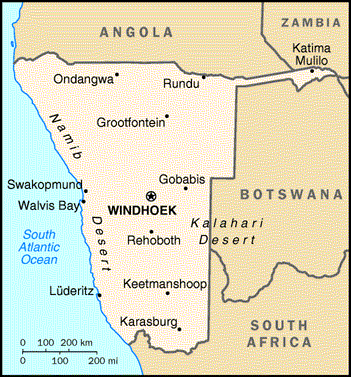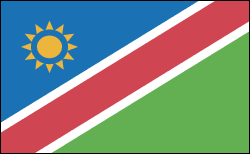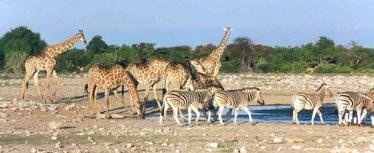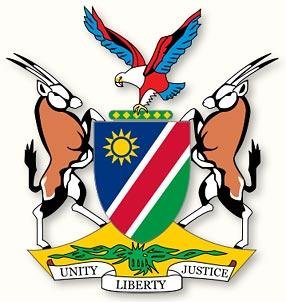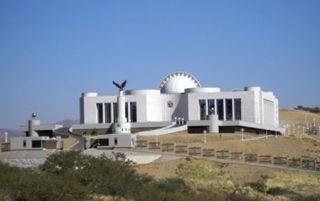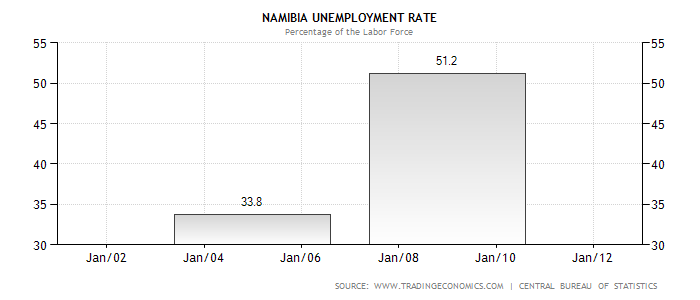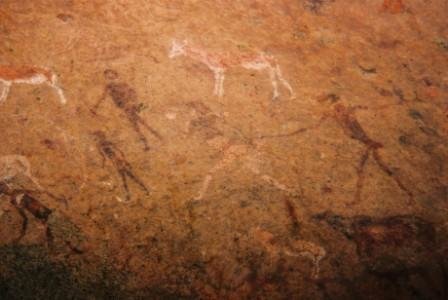Introduction
This essay, gives analytical information and facts about Namibia, one of the countries found in Africa. The paper is well structured, with segments covering specific elements of the country’s profile. For example, the geography section will include the country’s size, hydrological features, orographic features, climatic features, and flora and fauna.
The paper will also focus on the state’s history, featuring some of its major achievements, which have shaped it for decades. With regard to politics, the analysis will explore Namibia’s governance style, including political representation, political division, arms of power, and national symbols.
Lastly, the essay will cover the country’s culture and tourism sector, with significant attention on, food, religion, national parks, and festivals. Importantly, an appendix will be provided, with pictures, statistical figures, symbols, and maps, among other items, which will be relevant in achieving the objective of this paper.
The Geography of Namibia
With only 825,418 km2 of land area, Namibia has a fascinating geography and has features that have put it on the world map. Another amazing fact about Namibia is that it has less than three million people, making it, the second least populated state in the world.
The distance between the most southern point to the most northern point is 1, 320 km, the narrowest distance from west to east is 325 km, and the widest distance is 1,440 km. Moreover, the country has a perimeter of 5 760 km, with 1570 km being the coastline (Streissguth 8).
Namibian coastline is brought about by the Atlantic Ocean, and it is bordered by countries like South Africa, Zambia, Zimbabwe, Angola, and Botswana. Namibia can be located on latitude 17.5o-29o south and longitude 12o-25o east.
Geographical areas in Namibia
Namibia has five major geographical features, which have played a major in shaping its climate and vegetation for centuries.
These features are: Kalahari Desert, the Namib Desert, the Central Plateau, the Bushveld and the Great Escarpment (Streissguth 8). The following segments describe the five features in details.
Central Plateau
This plateau cuts across the country, from north to south. Importantly, the plateau is bordered by several major geographical features, which have remained significant, including the Skeleton Coast, River Orange, Kalahari Desert, and Namib Desert. Königstein, one of points found on the plateau has an altitude of 2,606 meters above sea level.
Additionally, the plateau has remained important in supporting the economy of Namibia by providing arable land, which allows agricultural production. This portion of arable land is part of the country’s one percent of land, which supports almost half of the population by providing job opportunities.
The topography of this region is low, even though it shares some similarities with other features, say, the Great Escarpment.
Like other parts of the world, the Central Plateau experiences two major weather seasons, characterized by frost and high temperature, depending on the time of the year. Notably, the plateau is the home for the country’s capital city, Windhoek.
Namib Desert
This is one of the major geographical features in the country, found along the coastline, and, and is known for its sand dunes and gravel plains. Besides the desert, there are other areas within it, which have become of great significance to the country, including the Namib Sand Sea and the Skelton Coast (Streissguth 8).
It is essential to note that the sand sea occurs as a result of soil erosion, which facilitates collection of the sand mainly in River Orange and in other parts of the desert. This makes sand particles to be deposited back to the shores, especially due to the presence of strong currents along the coastline.
The process leads to accumulation of mounds of sand, which grow to become dunes. These continuous processes have led to the formation of the largest sand dunes in the world.
In some places, the wind forms gravel plains, due to the absence of sand (Cubitt 8). Namib Desert is not different from others around the world; it is characterized by little vegetation, due to inadequate rainfall received annually.
The Great Escarpment
The escarpment’s altitude is over 2,000m above the sea level, with its temperature exhibiting variations as one moves away from the Atlantic water, to the inland region, as fogs slowly disappear.
Moreover, it has been observed that the Great Escarpment is potentially productive in terms of agricultural production as compared to the Namib Desert, which has low agricultural viability (Streissguth 9). There is always precipitation, which occurs when moisture is eliminated by wind-action.
It is believed that the valley’s changing topography and the water, which precipitates play a crucial role as microhabitats for several endemic organisms.
In terms of vegetation, the Great Escarpment has varied woodlands and shrubs, which serve animals in the region as habitat.
Bushveld
It is located in the north eastern side of the country. Unlike any other region in Namibia, Bushveld records the highest level of precipitation, estimated at 400 mm per annum. Besides better rainfall, the area also experiences moderate and cooler temperatures, ranging between 10 and 30 °C.
Though Bushveld receives rain, the water is easily lost from the soil, because of its sandy nature. The proximity of Bushveld to Etosha Pan also makes it more important to the country, since the latter is known for its attractiveness around the world.
In terms of characteristics, Etosha Pan accumulates water during winter, which grows to cover approximately 6,000 km2 of the surface (Streissguth 13).
As a result, the area has a significant ecological role, hosting different birds and animals, which migrate from savannah during summer. It is essential to note that Bushveld is highly regarded and is recognized by the World Wildlife Fund.
Kalahari Desert
Among all Namibia’s geographical features, it is believed that the Kalahari Desert remains to be the most famous, because of its impact in the country, and physical nature.
This feature is shared by two other nations, South Africa and Botswana, and has a wide spectrum of conditions, ranging from severe arid sandy desert, to portions which do not conform to the conventional description of a desert. For example, Succulent Karoo has countless species of plants, which are not common in other parts of the country.
On global scale, about thirty percent of succulents occur in Karoo (Cubitt 8). Obviously, it can be argued that the region’s ability to sustain high production is due to reliable rainfall, which is received annually.
Moreover, drought patterns in the area are not regular, and water obtained from winter rains is used for the sustenance of various interesting plant species.
Other features of the desert are inselbergs, which play a major role in the formation of microclimates and habitat for living creatures that, cannot withstand the harsh conditions of the desert.
Coastal Desert
This desert is among the first ones to be discovered by geographers in the world. Additionally, its sand dunes are considerably high, a characteristic, which has given it global uniqueness throughout history.
Importantly, the Coastal desert hosts the Namib Desert and the Namib-Naukluft National Park, which have great significance to the country as it shall be seen later. It is worth noting that this desert is unique in the world, due to a rich presence of diamonds, which have remained significant to the country’s economy for years.
The desert is mainly divided into the Diamond Coast to the south and the northern Skeleton Coast to the north. Dense fog is oftentimes experienced at the point where Africa meets the Atlantic Ocean.
On the other hand, 54% of the desert is made up of sandy beach, while sand and rock add up to 28%, with 16% of the shoreline being completely rocky.
Climate of Namibia
Namibia is mainly characterized by desert climatic conditions, with hot days and cool nights. Regions around the coastline rarely experience rainfall because of the cold Benguela current that causes fog.
On the other hand, temperatures are slightly slower over the central plateau, and this is attributed to this region’s distance above the sea level. Namibia is known to be a sunny country and experiences sunshine in three hundred days on average, and rain occurs during summer, i.e. from November to February.
As a result of the summer rainfall, dry riverbeds usually get soaked with water and mud within the first few days (Streissguth 13). Additionally, most plants are seen during this season, when there is enough water to support their survival.
While this is regarded as the most prevalent pattern, the interior region is known to experience two seasons, with the first one starting from October to December while the long season occurs from mid-January to April.
Summer season usually runs from October to April, with possible high temperatures of 40º C, which significantly drop at night. On average, daily temperatures in Namibia range between 20 and 34º C.
While this is the case, summer season may sometimes be characterized by temperatures that are below the freezing point. Due to its sunny climate, certain tourist attraction facilities like the Etosha National Park are open for 365 days (Streissguth 13).
The season between May and September is believed to the best to visit the Namib Desert, especially when the temperatures are relatively cooler, even though visitors could experience extremely chilly nights.
Flora and Fauna in Namibia
The country’s fauna and flora is largely influenced by its climate since organisms have to adapt to the prevailing conditions in order to survive. The characteristics of Namibian vegetation are based on the zone, to which it belongs according to the classification that has been done.
Moreover, Namib Desert is the home of Welwitschia Mirabilis, which was among the first plants to be, discovered (Cubitt 10). There are approximately one hundred and twenty species of trees in Namibia, with different adaptive features and importance to man and other animals.
In understanding the country’s fauna, it is worth noting that each region is characterized by different species, depending on climatic conditions.
On the other hand, the arid central and northern regions are home for Aloe dichotoma. Over two hundred species of plants exist in Namibia, with most of them occurring in areas, which receive some rainfall during the year.
Besides the country being a home of several plant species, there are various animals found in different parts of the country, based on a wide range of factors, like availability of vegetation. Common game species include but not limited to giraffes, rhinos, elephants, buffalo, leopard, lion, and cheetahs (Cubitt 10).
Besides these animals, Namibia is also a home of numerous mammals, which are well-distributed across the country, including bats and impala. Some of its endangered mammal species are lions, black rhino, waterbuck, wild dog, oribi, and puku.
Additionally, there is a wide-range of antelopes found in the country, ranging from the smallest to the biggest species, with mongoose and jackals existing in several places.
Apart from the animals described above, Namibia is also known to be a home of more than six hundred and thirty species of birds. In terms of breeding, most of them are bred locally, a trend, which has been consistent for years.
Importantly, Namibia’s conditions favor a wide range of birds, and their population contributes significantly to the world’s statistics. Common endemic bird species include but not limited to Damara tern, Rockrunner, and Herero chat.
Importantly, the country’s coat of arms features the Africana fish eagle, while the sociable weaver remains of significant interest to visitors who tour Namibia (Cubitt 11).
The history of Namibia
Namibia’s history is mainly divided into three sections, namely, the pre-colonial period, the German era and the Apartheid period. This section of the essay explores these three segments, detailing major events, which occurred at every transitional stage.
Pre-colonial period
While very little is known before Europeans landed in Namibia, it is believed that the country was busy with activities. Due to the fact that there was no technology to record events, most of the historic facts are passed on through oral traditions like, songs and narrations, among various communities.
Before the arrival of Europeans in 1800s, Namibians embraced strong cultural and social traditions and practices. It was during this time that Oorlams had managed to cross the Orange River, using horses and with guns (Randall, 86).
As a result, the group became powerful, with contradicting information about the origin of herds of animals, which they possessed. While others believed that the animals were obtained through theft, some argued that they were a form of taxation, which they received from other communities.
This period was also characterized by raids, riding horses, and smoking of marihuana among others. The Oorlams were actively involved in “guns for coverts” for fun, and they developed strong connections with the Cape for the purpose of trade, constructing roads, and established Winterhoek as their headquarters, which was later changed to Windhoek, even though some people have argued that the current Namibian capital city was founded by the Germans.
The German Period
After Africa was divided into various nations, during the Berlin Conference in 1883, German took over the territory, even though most Europeans saw nothing valuable from the dry land. They named it as the German South West Africa, and went ahead to advance their agenda of invading the land, against the wishes of Namibians.
They therefore took control of the central and southern regions, which later formed the current Namibia. As intruders, Germans used all means at their disposal to gain land, including purchase and its exchange for protection, even though the latter did not work for long (Randall, 90).
As a result, the Germans had no option but to consider another way of winning control over the local communities in order to advance their agenda in the foreign territory.
In 1889, Germans adopted a new approach in winning the control of Namibia. Among their early approaches was the establishment of a fortress, which is still in existence, hosting the National Museum of Namibia. This construction marked German’s new approach in colonizing the territory and winning its control by use of the military.
Importantly, Germans never enjoyed full control of Namibia as the pre-colonial Namibian people engaged them in conflicts and organized revolts (Randall, 90). As a result, thousands of people died as concentration camps were also established to host prisoners.
Back in Germany, most people were against the move, with increased calls to end the mass killing of the Herero in Namibia. The struggle is seen as one of the most fatal in the county’s history, resulting into over 50,000 deaths.
Even though Europeans were colonizing Africa, it is believed that a lot of fierce violence and war was in Europe, especially after the assassination of Sarajevo, marking the beginning of the First World War. In 1915, Louis Botha, was given the mandate to rule over the territory, as he served in South Africa as its Prime Minister (Cubitt 22).
Due to the significant impact of the colonization period, there is tangible evidence that was left and lives to-date. For instance, Namibia remains the only African state, which publishes a daily German Newspaper.
Additionally, several buildings and monuments that were constructed during the colonial period are still present in Namibia. The German language is also present among nonofficial languages, and is commonly used by the Namibians.
The Apartheid period
After the independence of South Africa in 1948, Namibia was not set free as it remained under its neighbor’s colonial administration, which had self-centered interests. There was widespread segregation as Africans remained less human in the eyes of the white people.
For instance, the immorality laws prohibited the Whites from having sex with people whose skin was of different color. This was fully support by the Immoral Act, enshrined in the constitution (World Bank 2).
Apartheid continued in Namibia and South Africa, as black people suffered in the hands of white settlers, who did not allow interaction with Africans.
According to the laws of apartheid, the residents were supposed to move out of Windhoek because the city was meant for white people.
As a result, Africans were resettled from the city and a buffer zone established, dividing their residential regions, to avoid mingling.
The Hidden Namibian History
It is true that the German period was quite influential in shaping Namibia into what it is today. However, several important historic events have been overshadowed by these events, creating a notion that nothing else happened in Namibia, apart from colonization.
For instance, there is no evidence of those who died in war, fighting for the freedom of their nation. Additionally, Namibia lacks museums, which exclusively cover the events of the apartheid period (Randall, 92). These facts can only be found by interested people from historic sites around the country.
There is evidence of mounds in Swakopmund, which served as a cemetery during colonization, and the mounds are likely to be graves of those who were massacred.
The Nature Reserve ‘Daan Viljoen’ remains a major destination for most Namibians, located near the country’s capital city. It is highly remembered as the home of the Damara community, which was actively in fighting against colonization and apartheid.
The Political System of Namibia
This portion of the essay mainly focuses on the manner in which Namibia is governed, including but not limited to government type and composition, political representation, political division, executive, legislative, judicial powers, and national symbols.
Constitution and Political System
Namibia is a democratic nation and is governed by a president, who is recognized as the head of state and also the head of government.
The Legislative Assembly is made of various political forces from different parts of the country. After its adoption in 1990, the Namibian constitution became a source of hope as it outlined the rights of its citizens, protecting them from exploitation (World Bank 3).
The adoption of the constitution was considered as one of the milestones in moving away from the past. Additionally, the country’s constitution affirms every person’s right of association, freedom of speech, right of worship, assembly, physical integrity, and privacy among others.
Moreover, Namibia embraces a multi-party democracy, and the country’s authority is vested in three arms of governance; judicial, legislative and executive bodies.
Parliament
The National Assembly of Namibia comprises of seventy-two members of parliament, who are usually elected after five years. Besides these members, the president is constitutionally allowed to nominate six members, who also become part of the parliament.
Legislation is the principal role of the parliament, and is also allowed to make appeals, against decisions made by the government through a two-thirds majority vote. On the other hand, the country’s National Assembly is made up of twenty six members, who are usually drawn from thirteen regions around the country.
They mainly have an advisory role in Namibia, and serve for a term of six years. Based on the nature of their task, National Council members are elected by citizens.
Namibian Government
As mentioned before, the President of Namibia is also the head of state, who is appointed by the citizens through an election system. Despite these constitutional powers of the president, the country’s government is controlled by the prime minister.
South-West Africa People’s Organization, SWAPO led Namibia to independence and has remained the ruling party to-date (World Bank 3). Additionally, SWAPO is considered as the leading political party in the country.
Namibian President is Hifikepunye Pohamba and has been in power since 2005. Upon his election, he appointed Nahas Angula as the country’s prime minister, a position he has held to-date.
For more than two decades, SWAPO has remained popular across Namibia, and has more than two-thirds majority in parliament, attributed to its outstanding performance. In most cases, Namibian government has won the confidence of its people through good governance.
Most leaders in the country, including the president have endeavored to pursue the course of leadership initiated by the country’s first president, Sam Nujoma, who preached peace and democracy (Watson and Lemon 330).
This approach has contributed to Namibia’s continuous economic growth and racial harmony, which is viewed as a major hurdle in most African states.
Of great significance is the fact that the government has heavily invested in education and infrastructure, as a way of advancing its development agenda. For this reason, Namibia is ranked highest, with a literacy rate of 85% in Africa.
In addition, the Namibian government has highly been applauded for its old age grant, which is mainly financed by the government as a way of sustaining its people (Randall 80). President Pohamba has played a major role in the war against corruption, an achievement that contributed to his reelection in 2009.
The government is based in a new State House, which was commissioned in 2008, located in Auasblick, south of Windhoek.
According to the constitution of Namibia, the country’s judiciary is independent, and is not supposed to be influenced by any arm of authority in the country, with the Supreme Court being the highest organ in interpreting the country’s laws (Cubitt 24).
The Economy of Namibia
Even though Namibian economy does not fully resemble that of South Africa, several similarities have been found to exist.
This is mainly linked to institutional relationships between the two states. In particular, the two countries have continued to perfect their relationships through the Southern African Custom’s Union together with the Common Monetary Area.
In addition, there have been far-reaching financial and trade flows, contributing to a better relationship between the two states. The country has a rich source of natural resources and a well-developed infrastructure, which facilitates access to markets.
With this status, one would expect to have a uniform economy, which is not the case. Instead, Namibia has a highly diversified economy.
Importantly, major Namibian economy is widely supported by the primary sector, through mining and processing of several minerals around the country (World Bank 8). Large scale farming and fish rearing equally play a significant role in contributing towards economic growth.
As the leading source of diamonds, the country’s economy depends on global trends, especially within the financial market. Namibia has an annual GDP of USD 5,155 and has a high degree of unequal income distribution and living standards.
In terms of income inequality, Namibia has hit world records, with most of the resources being controlled by a small percentage of its citizens.
Agriculture
Namibia is faced with drought since most of its land is a desert. Nevertheless, the agricultural sector has remained an essential sector in promoting the country’s economy, as a source of income and also a source of employment to thousands of Namibians.
The commercial and subsistence subsectors are the main players towards agricultural production (World Bank 9). Sothern and central regions of the country receive favorable rainfall, which sustains large-scale farming. On the other hand, climatic conditions in north-central districts are known to support cattle rearing.
This contributes to up to 80% of the country’s overall farming output. Even though livestock ranching covers more than two-thirds of this type of farming, it carries the highest risk, since it is highly vulnerable to drought and harsh conditions.
On the other hand, subsistence farming is common in the northern parts of the country, where land is communally owned. Most of these areas are fertile and receive reliable rainfall to sustain these activities.
Due to suitable conditions for maize and millet, the two are mainly produced for export, while livestock farming chiefly supports local communities. Importantly, the northern part receives low yields because of overgrazing, which is practiced by local communities.
Close to 49% of the labor force is absorbed in the farming industry (World Bank 9). Land ownership disparity in the country is common, with four thousand whites owning 37% of all arable land in the country, while 70% of the population concentrates on subsistence farming for their livelihood or work on farms, which are owned by the whites.
The government has received negative reactions from its citizens and activists, with regard to the communal system of land ownership. On average, forty percent of the total maize consumed by Namibians comes from commercial farms, which are mostly state-owned.
Mining and Energy
According to the 2007 economic analysis, mining accounted for 12.4% of the country’s Gross Domestic Product. Out of this, mining of diamonds represented five percent. In the year 2000, production of mining registered a total of 1.5 million kilograms, which earned Namibian government $500 million through exportation (World Bank 11).
In this line of thought, it is essential to note that oil exploration is underway, especially along the coastline.
Fishing
Namibia prides to own some of the richest fishing areas on the planet, which have significantly transformed the country’s industry. The grounds have the potential of producing up to 1.5 million metric tonnes annually.
In recent years, Namibia’s fish industry has experienced tremendous growth, thus providing employment opportunities and boosting the economy. Different species of fish are found in Namibia, ranging from pilchards to mackerel.
By the time Namibia got its independence, most of the fish resources and stocks had been adversely affected as a result of exploitation and lack of protection (World Bank 15).
This was however reversed upon independence through resource management policies and a wide range of campaigns, aimed at restoring aquatic resources.
Manufacturing
This sector has shown commendable growth in the last decade. However, it is largely limited by an array of factors, some of which are external, like the competition it receives from South Africa and inadequate professionals to perform specialized tasks.
As mentioned before, the government of Namibia has heavily invested in its infrastructure, which has promoted development and economic growth in various ways (Streissguth 59). For instance, the Walvis Bay has become a major boost to the fishing sector, and is considered as the industry’s hub.
This bay is expected to serve as a major link to the southern region in advancing economic growth. Additionally, Namibia’s civil aviation facilities are ultramodern, meeting world-class standards. Besides this, it has a well-maintained road transport network.
Labor
Despite the fact Namibians are known to be active in various ways, it is believed that most of these activities and the skills employed are informal. They are therefore applied in subsistence farming, where the production is on small-scale.
Lack of specialized skills and trainings are seen as major hindrances to most people who seek employment in the formal sector in the country (IMF 15). As a result of this, the government has embarked on reviewing the education sector, in order to impart its citizens with relevant skills in to meet the demands of a competitive economic world.
Namibia is one of the countries in the world with highest rates of unemployment. Unlike in other countries, strict unemployment is very high, with most unemployed people looking for full-time opportunities.
By 1999, Namibia had 20.2% unemployment, which rose to 21.9% in 2002 and skyrocketed to 29.4% in 2008. When the description is broadened to include those who may have dropped the idea of seeking employment after being frustrated, it can been seen that the country’s level of unemployment rose from 36.7% in 2004 to 51.2% in 2008.
It is important to note that this description recognizes those people serving in the informal sector as being employed. In addition to this information, it is believed that 72% of people who are jobless have worked before for at least two years (IMF 15).
It is worth noting that Namibia has continued to experience a decreasing number of its citizens who are employed since 1997. Due to the failed education system, only eight thousand school leavers get employed out of about twenty five thousand candidates.
Namibian workers are organized in trade unions, which are mandated to fight for members’ rights in order to eliminate cases of exploitation. The most active trade union in the country is the National Union of Namibian Workers (NUNW), which works closely with the government in championing its course.
Namibian Tourism and Culture
The tourism sector equally plays a major role in the country’s economy and has continued to experience tremendous growth from the time Namibia gained its independence. This growth has seen the number of visitors touring the country approach one million a year in recent years, with most tourists coming from South Africa (Ejikeme 163).
Other countries whose citizens tour Namibia include Germany, Italy, and France. Importantly, part of the revenue derived from the tourism industry is channeled to nature conservation projects.
On annual scale, tourism contributes about N$7.2 billion to the county’s GDP. In the year 2010, Namibia was ranked as the 5th best tourist destination in the world with regard to value by the Lonely Planet.
National Parks in Namibia
Namibia’s wildlife has significantly grown and remains crucial in conserving the country’s rare species of animals and plants. In general, the parks are divided into two; those that focus on wildlife and those that are mainly wilderness areas, with beautiful sceneries, which are attractive to view.
Etosha National Park is considered as one of the leading national parks in the continent in terms of its diversity and overall size. Even though it is a home for several species of large animals, it is widely famous for its population of elephants.
Other animals found in the park include but not limited to antelopes, giraffe, lions, zebras, and wildebeests. It is believed that Etosha has remained attractive to a wide variety of animals, because of its water found at the Etosha Pan, which was once a lakebed (Ejikeme 159).
The coast of Namibia is also a home of two major parks in the country, namely Skeleton Coast Park, which is located to the north and the Namib-Naukluft National Park, which is situated to the south.
The Skelton Coast Park is mainly a home of whales, with this segment of the coastline, being prone to shipwrecks, caused by fogs and dunes triggered by the Namib Desert. Additionally, Cape Frio is a major tourist attraction site for the park, as it harbors a huge colony of seals.
Besides the animals, tourists take pleasure in trekking along the coastline, enjoying the climate and beautiful sceneries (Ejikeme 159). On the other hand, the Namib-Naukluft National Park measures 50,000 km2 and is characterized by a variation of desert geographical features.
The Sossusvlei region is seen as the most beautiful area of the park, with apricot-orange dunes, which are not found anywhere else on the planet. Naukluft Mountains has also earned the park great honor for providing trekking ground for visitors.
Archaeological Sites in Namibia
Despite the fact that Namibia is known around the world as a dry country, it has a reputable archaeological record for most south hemisphere, showing the occupation of the region, more than a million years ago (Ivanovic 23).
For example, The White Lady is the commonest piece of painting in the country, and was discovered by Reinhardt Maak in 1917. The painting was named by Abbe Breuil who was an archaeologist, who published a book in 1955, which carried the title.
Among other factors, the name has equally contributed to the extraordinary fame of the image, attracting a wide range of senior people around the world. Research, which has been carried out over years has not shown the presence of any foreigners, indicating that the painting is of Namibian origin (Ivanovic 23).
On the other hand, Twyfelfontein is widely known for its rock engravings around the continent, with several depictions occurring on huge blocks. The engravings show various animals like zebras, lions, ostriches, and giraffe among others. Engravings of human hand and footprints have also been discovered on these rocks.
Namibian Culture
Ethnicity remains crucial in Namibia, with the opposition party, Democratic Turnhalle Alliance (DTA), bringing together several ethnic-based groups. As a result, citizens of Namibia have certain elements, which identify them as a community.
Besides being produced for commercial use, millet and sorghum are staple food, among most Namibian communities. On the other hand, pastoralists are known to cherish milk and beef. Northern inhabitants feed on beans and greens, as other communities consider hunting and gathering to be a source of dietary supplements (Ivanovic 23).
Slaughtering of cattle or goats is common during major occasions, with fish consumption having increased due to government’s improvement of the sector. Home-brewed beer is also common in such celebrations.
Moreover, majority of Namibians are Christians, with the Lutheran Church having the highest number of followers. Other churches include Anglican, Catholic, and Dutch Reformed.
Conclusions
From the above analysis, it is evident that Namibia has a host of fascinating facts, ranging from its pre-colonial history to its present status. Despite the fact that the country’s landscape is dry and the climatic conditions are not favorable, it has excelled in several ways.
In general, there are numerous achievements, which it has acquired since independence, like improved economy, infrastructure and good governance. The country equally holds several world records, especially with regard to its geographical features, climate, and tourism, among other sectors.
Importantly, Namibians adore their culture even though the country has undergone several stages of urbanization.
With a population of less than 3 million people, Namibian leadership has to advance economic growth, in order to curb unemployment and carry out education reforms, which would address the country’s problems.
Works Cited
Cubitt, Gerald. This Is Namibia. Cape Town: Struik publisher, 1999. Print.
Ejikeme, Anene. Culture and Customs of Namibia. Santa Barbara, California: ABC-CLIO, 2011. Print.
IMF. Namibia – Recent Economic Developments. NYC: International Monetary Fund, 1998. Print.
Ivanovic, Milena. Cultural Tourism. Claremont: Juta and Company Ltd, 2009. Print.
Randall, Keith. “Namibia: From Ox-Wagon to Modernity.” Contemporary Review 292. 1696 (2010): 86-94. Print.
Streissguth, Tom. Namibia in Pictures. Minnesota: Twenty-First Century Books, 2008. Print.
Watson, Ian, and Roy Lemon. “Geomorphology of a Coastal Desert: The Namib, South West Africa/Namibia.” Journal of Coastal Research 1. 4 (1985): 329-342. Print.
World Bank. Namibia Country Brief. New York: World Bank Publications, 2009. Print.
Appendix
